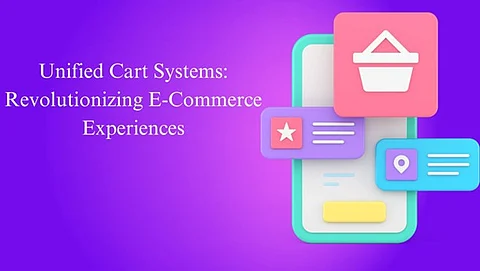

Unified cart systems revolutionize e-commerce by streamlining shopping experiences and enhancing business performance. They allow customers to combine purchases across categories in a single transaction, breaking traditional barriers. Pavan Vovveti explores their mechanics, benefits, challenges, and future potential, highlighting their transformative impact on user satisfaction and operational efficiency in the evolving digital marketplace.
Unified cart systems revolutionize e-commerce by enabling cross-category purchases through a single interface, simplifying the shopping process. Unlike traditional carts, they consolidate items into one streamlined transaction. With advanced features like real-time inventory updates, dynamic pricing, and personalized recommendations, these systems enhance usability and deliver a seamless, efficient experience for customers and businesses.
Unified cart systems offer businesses a competitive edge by streamlining transactions, reducing friction, boosting customer satisfaction, and driving engagement.
Unified cart systems aim to deliver a superior shopping experience by providing convenience, speed, and consistency through an intuitive interface that simplifies complex purchasing processes, meeting modern customers' evolving expectations.
Unified cart systems reduce cart abandonment with single checkout pages for multiple categories or sellers. Consistent designs across devices enable seamless shopping, while personalized recommendations enhance the experience by helping customers discover complementary products effortlessly across platforms.
These improvements directly impact customer loyalty. A seamless shopping journey increases satisfaction and encourages repeat purchases, fostering a strong relationship between businesses and their customers.
Unified cart systems transform e-commerce performance by streamlining shopping, boosting conversion rates, and enabling cross-category bundling. This creates opportunities for cross-selling, upselling, and increasing the average order value per customer.
Unified cart systems consolidate data, offering insights into customer behaviour across categories. This enables businesses to refine marketing, optimize inventory, implement targeted promotions, and use dynamic pricing strategies to boost sales and improve operational efficiency.
Furthermore, unified carts empower businesses to align their operations with customer preferences. By understanding shopping habits and trends, companies can make data-driven decisions, improving both short-term performance and long-term planning.
Unified cart systems face integration challenges, requiring technical expertise to merge legacy systems, standardize data, and ensure platform compatibility.
Unified carts need real-time inventory updates, robust infrastructure and analytics to ensure accurate stock levels and pricing across channels.
Unified carts face critical data security challenges, requiring stringent compliance with regulations like GDPR and CCPA to protect customer information and maintain trust.
Implementing unified cart systems successfully requires adopting modular architecture, enabling scalability and adaptability. This flexibility helps businesses meet evolving market demands and ensures their systems remain efficient and future-ready.
API integration is vital for unified cart systems. It ensures efficient data exchange, streamlined operations, enhanced reliability, and minimized downtime through robust strategies and standardized protocols.
Personalization and mobile optimization are crucial. To enhance engagement and support mobile commerce growth, we offer tailored recommendations, dynamic pricing, responsive design, one-click purchasing, and wallet integration.
The potential of unified cart systems extends far beyond their current capabilities. Emerging technologies such as artificial intelligence (AI) and machine learning (ML) promise to enhance these systems through more innovative personalization and predictive analytics. AI-driven recommendations and dynamic pricing adjustments could revolutionize how customers interact with e-commerce platforms.
Augmented and virtual reality integration in unified carts enables immersive shopping and real-time product visualization. Blockchain technology enhances security, transparency, and cross-border transactions and supports cryptocurrency payments, revolutionizing e-commerce experiences and customer engagement.
As e-commerce continues to evolve, unified cart systems must adapt to meet the demands of new shopping channels, such as the metaverse and voice-assisted commerce. By staying ahead of these trends, businesses can maintain their competitive edge and deliver innovative, engaging experiences to customers.
In conclusion, unified cart systems represent a transformative leap in e-commerce, combining convenience and strategic insights to meet modern consumer expectations. These systems enhance user experiences and drive significant business outcomes by streamlining shopping and offering advanced personalisation. As Pavan Vovveti highlights, unified carts are pivotal for innovation, poised to evolve with emerging technologies and shape the future of e-commerce, delivering lasting value for businesses and customers alike.
